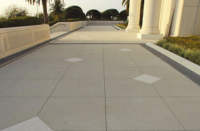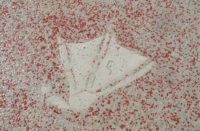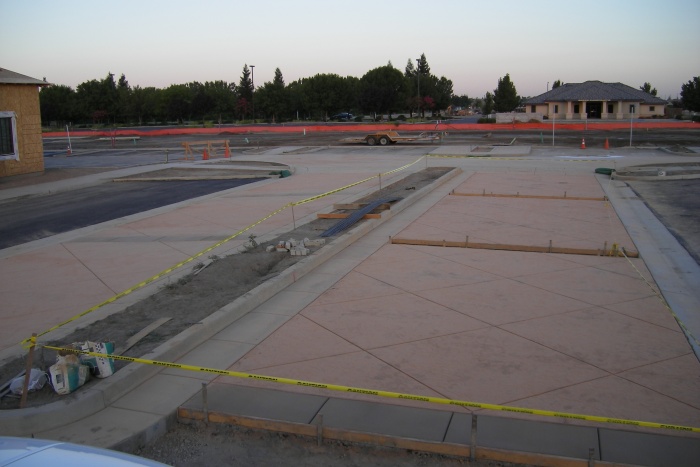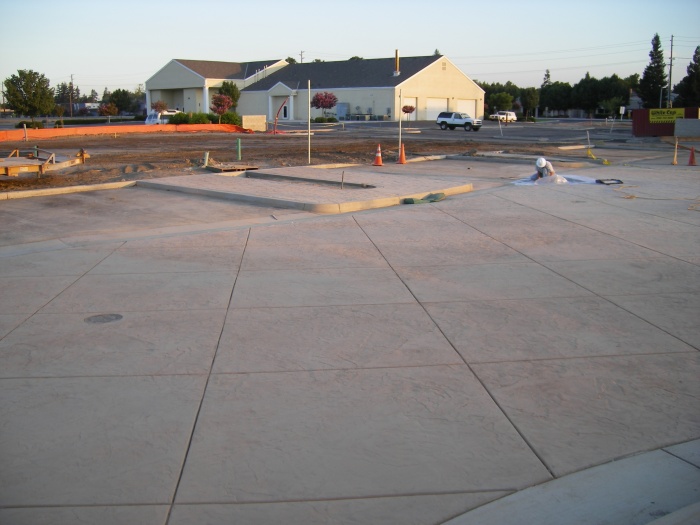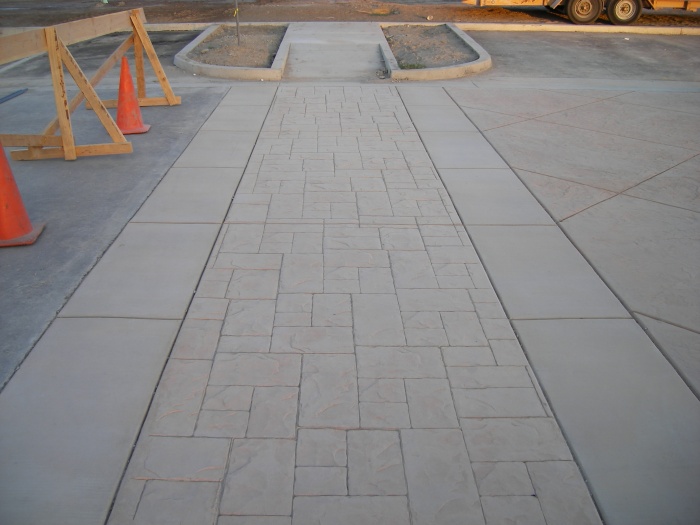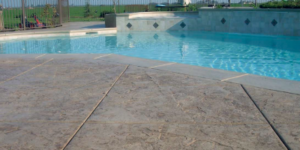“Let me get this right. You are simply going to walk up to the most successful casino and resort builder in our time and ask why he chose decorative concrete?” asked my wife. “Yes,” I said.
With a confused face, she asked the same question but slightly reworded. “Steve Wynn, the Las Vegas mogul? You are going to say, ‘My name is Doug Carlton and I write for Concrete Decor and let me ask you about decorative concrete?’”
“Yes, something like that,” I said, smiling. “’My name is Doug and you, Mr. Wynn, could definitely afford to use any type of hardscape or floor coverings, but you chose decorative concrete. Why?’”
The last thing I heard her say as she exited the room and headed down the hotel hall was, “Good luck with that.”
What she didn’t realize was that I had thought long and hard well before checking into the Wynn Las Vegas. In fact, I had, by hook or crook, made contact with someone on the “inside” and knew my best chance of having any conversation with Mr. Wynn was by a well-planned and timed “chance” meeting. I knew Mr. Wynn usually took a midmorning walk with his guide dog in this area of the casino. It must have been on my fourth hour of waiting that my contact whispered what I didn’t want to hear.
“Doug, you didn’t hear this from me, but Mr. Wynn is currently boarding his plane for Chicago. Sorry.”
No big deal because I, like you, already knew the answer to the question. I just wanted to hear him say it, I guess. He used decorative concrete for the same reason thousands of contractors use decorative concrete on commercial projects across the country and around the world: because it is the most attractive, durable, affordable and easiest product to maintain that is available.
This article is about the explosion in commercial decorative work and how it may benefit your company. I’m not saying that the residential side of business is dead, but it certainly has stalled, not just because of the decline of new construction but because of the lack of availability for folks to access their home equity. Most lenders have nailed the doors shut since the record appreciation roller-coaster wheels fell off. There are still plenty of home improvement projects around, although nowhere close to what it was. But this is about the new market and where you, as a decorative installer, fit in. Let’s look at why it is booming, how it is different, and what it takes to excel in it.
Why the new market is booming
I have given this booming commercial market a lot of thought for a number of reasons. This article will offer more than the obvious explanation that all the new housing tracts that popped up across the country need grocery stores, restaurants and coffee houses. This is about the reason for the huge increase of decorative concrete being used within this enormous market.
Land prices have increased at record levels. So have construction costs. Developers realize they can no longer build inexpensive commercial projects. The more they pay for land and improvements, the more they must charge to lease out the buildings. It simply will not pencil out to pay huge prices for the land but build simple or inexpensive structures. These new or remodeled buildings must be attractive, eye-catching and desirable to justify large lease rates. From the driveways to the landscape, from the floor to the ceiling, these buildings need to leave impressions. I suspect Mr. Wynn used decorative concrete on his $2 billion-plus resort for this reason — it’s attractive, durable, and easy to maintain.
How is the commercial side different?
Anyone who has ever read one of my articles knows that I am not a price guy. I feel if you build your business on the best price, your wife better have a good job. I will argue value to the bitter end and rarely budge. But commercial work can be the complete opposite of my value ways. Five or 10 cents a foot can add up to big numbers. These projects are usually budgeted, organized and on the fast track. Grand openings are well planned, and excuses in the field will land you and your crew outside looking in. Progress payments and draws can be long and few between.
All of these things should work in your favor, and here is why. The above challenges are a natural way of limiting the playing field. Most competing contractors will charge accordingly to make it worth their while. Most architects will not sign off on subpar work, so the quality bar helps keep competitors in check.
The size of these projects usually justifies the square foot price reduction. I know this was hard for me to get used to, and I found myself doubting my estimating. You may ask yourself how you can charge 2 dollars per square foot less and profit more. The reason is because your crew should be able to install twice as much daily as on a normal residential job that has limited access. Big open areas are a decorative contractor’s dream.
Many flooring contractors have tapped into the value of working evenings after other crews have gone home. This new-age commercial market leaves emotion and feng shui at the curbside. This is about business and who can get the decorative job done and then protected for the next trade. It’s full of possibilities and profit, but the money still follows the talent. I am convinced, more decorative contractors will prosper in this commercial market over the next few years than ever before.
Your place in the market
I’m always hesitant to talk financial rewards in my column out of concern for contractors cutting quality for profitability. The commercial side of decorative concrete is no different than high-end homes as far as quality. The only difference is efficiency and volume. Having said that, let’s talk about how we can prepare your company for the future of decorative concrete.
Let’s assume you have the skill and workforce to enter at least small-scale commercial projects. The first step is to make contact with the general contractors building these projects. When contacting commercial builders, ask yourself what your company can do for them. Contractors and developers at this level want to use capable and hassle-free subs. Simply make contact and ask if you can bid the next project that involves decorative concrete. They need to realize this is your specialty and not something you do on the side. Don’t fax estimates, but present them in person and know who the decision maker is. Justify your price and quality. Believe it or not, most general contractors have to ask a painter to stain floors or a traditional concrete mason to stamp because they have no one on their decorative team. This is a recipe for disaster on commercial projects.
I have no doubt that you will be awarded projects. But first we need to be sure you have cash flow, are insured, and can keep up with the fast-track schedule.
Most of us don’t have a closet full of cash earmarked for large decorative projects. These projects will work off progress payments and retentions, so you will need to be liquid enough to carry your company for 30 to 60 days. If this is a problem, I recommend visiting your banker for a line of credit. Start out small and ask for an increase as time proves your company credit-worthy.
Do yourself a favor and ask straight up about insurance requirements for subcontractors. You don’t want your check held up because of insufficient insurance coverage. Some contractors may ask if you are bondable. I recommend talking with your insurance agent to see if it’s worth the hassle. You will probably be asked to sign a contract with a liquidated damages clause. This may be a daily charge for the project not being finished on time. My suggestion is to be very clear how long your work will take and stick with the schedule. These projects move quickly, so prepare yourself and your team to work around other crews. The project manager needs to know up front about protecting your work.
Keep up. The pace of commercial projects will require extra organization from you and your crew. The increase in daily volume will require more from all materials and manpower. I try to be two days ahead of my crew with materials and layout to eliminate the loss of momentum. Efficiency will be the difference between a good job and a great one. Break the project down to bite-size pieces by letting your crew know what the goal for work completed is each day.
This is not the time to test a new sealer or product, so stick to what works. Save your testing for small jobs or samples. Don’t be afraid to ask for price breaks for large orders from suppliers. I usually bid my projects at full price and enjoy the savings from price breaks for rainy days. These can add up to thousands of dollars at the year’s end, so don’t underestimate price breaks.
Few economists will argue that the commercial side of construction is high even if residential is low. This has created a golden opportunity for those of us willing to test the decorative waters. Let me know how it goes.
